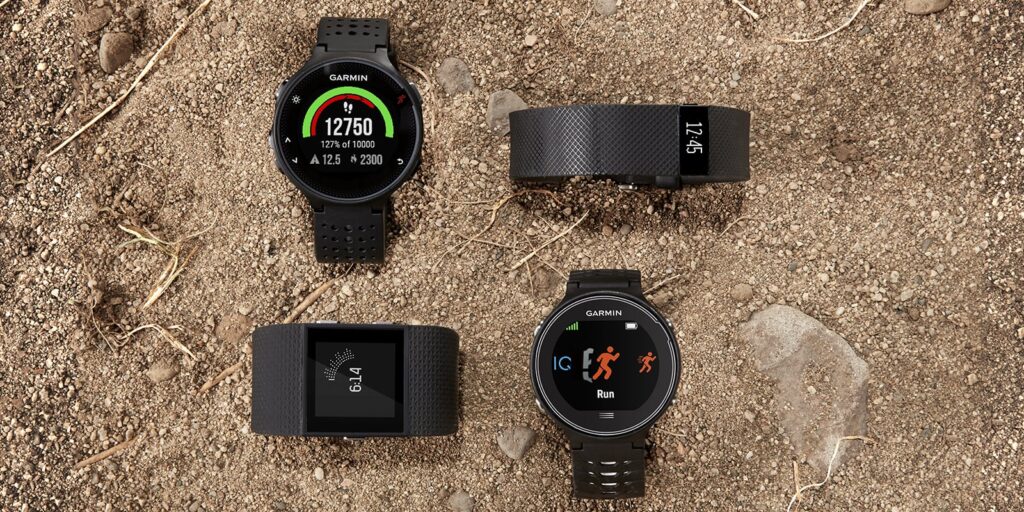Blog
The Best Heart Rate Monitors for Everyday Use
Heart rate monitors are no longer just for athletes; they’ve become essential tools for anyone looking to track their cardiovascular health, improve fitness, or simply stay informed about their body. Whether you’re monitoring heart health, tracking workouts, or managing stress, a reliable heart rate monitor provides real-time data and actionable insights.
In this guide, we’ll explore the best heart rate monitors for everyday use, their features, and how they can help you live a healthier lifestyle.
1. Why Use a Heart Rate Monitor?
Heart rate monitors offer numerous benefits for individuals across all fitness levels and health goals:

Key Benefits:
- Real-Time Data: Get instant feedback on heart rate during workouts or daily activities.
- Health Monitoring: Detect irregularities like unusually high or low heart rates.
- Improved Fitness: Optimize workouts by staying in target heart rate zones.
- Stress Management: Monitor heart rate variability (HRV) to track stress levels.
- Chronic Condition Management: Helps individuals with heart disease, diabetes, or hypertension monitor their cardiovascular health.
Heart rate monitors are versatile tools for both fitness enthusiasts and individuals looking to prioritize their heart health.
2. Types of Heart Rate Monitors
Heart rate monitors come in different forms, each offering unique benefits based on your lifestyle and preferences:
1. Chest Strap Monitors:
- Most accurate type of heart rate monitor.
- Uses electrical signals from the heart to provide precise readings.
- Ideal for athletes or those engaged in high-intensity training.
2. Wrist-Based Monitors:
- Convenient and comfortable to wear.
- Uses optical sensors to track heart rate through the skin.
- Built into fitness trackers and smartwatches.
3. Finger Sensors:
- Portable and easy to use.
- Often found in pulse oximeters.
- Great for spot-checking heart rate.
4. Ear Clip Monitors:
- Measures heart rate via blood flow in the ear.
- Less common but suitable for certain activities.
5. Arm Band Monitors:
- Worn on the upper or lower arm.
- Combines the accuracy of chest straps with the comfort of wrist-based monitors.
3. Features to Look for in a Heart Rate Monitor
When choosing a heart rate monitor, consider these key features:
- Accuracy: Essential for reliable readings, especially during intense activities.
- Battery Life: Look for long-lasting batteries for uninterrupted use.
- Comfort: Choose a device that’s lightweight and comfortable for daily wear.
- Connectivity: Bluetooth or ANT+ compatibility to sync with fitness apps or devices.
- Additional Metrics: Some monitors track calories burned, HRV, and sleep patterns.
- Water Resistance: A must for swimmers or those who sweat heavily during workouts.
4. The Best Heart Rate Monitors for Everyday Use
1. Apple Watch Series 9
Features:
- Built-in optical heart rate monitor.
- Tracks resting and active heart rates, as well as HRV.
- Sends alerts for irregular rhythms or unusually high/low heart rates.
- Syncs seamlessly with Apple Health for comprehensive data tracking.
Best For:
iPhone users who want a versatile smartwatch with advanced health features.
2. Fitbit Charge 5
Features:
- Tracks heart rate 24/7 with PurePulse technology.
- Measures HRV and stress levels.
- Includes Active Zone Minutes to optimize workout intensity.
- Lightweight and comfortable for all-day wear.
Best For:
Individuals looking for an affordable, fitness-focused tracker.
3. Garmin Forerunner 255
Features:
- Wrist-based optical heart rate monitoring.
- Tracks VO2 max and heart rate zones during workouts.
- Provides advanced metrics like recovery time and training effect.
- Long battery life (up to 14 days in smartwatch mode).
Best For:
Athletes who want detailed performance tracking.
4. Polar H10 Chest Strap Monitor
Features:
- Industry-leading accuracy with ECG technology.
- Compatible with over 200 fitness apps and devices via Bluetooth and ANT+.
- Waterproof for swimming.
- Adjustable strap for a comfortable fit.
Best For:
Athletes and fitness enthusiasts prioritizing accuracy.
5. Whoop 4.0
Features:
- Tracks heart rate, HRV, sleep, and strain continuously.
- Provides recovery insights and personalized recommendations.
- Compact and screen-free design for distraction-free use.
- Subscription-based model with in-depth analytics.
Best For:
Individuals focused on optimizing recovery and performance.
6. Scosche Rhythm+ 2.0 Armband
Features:
- Worn on the upper or lower arm for superior comfort.
- Tracks heart rate with high accuracy using optical sensors.
- Water-resistant and compatible with fitness apps.
- 24-hour battery life.
Best For:
Users seeking a balance of accuracy and comfort.
7. Samsung Galaxy Watch 6
Features:
- Tracks heart rate, ECG, and stress levels.
- Integrates with Samsung Health for detailed insights.
- Stylish design suitable for everyday wear.
- Built-in GPS for tracking workouts.
Best For:
Android users who want a smartwatch with advanced health monitoring.
8. Wahoo TICKR Chest Strap

Features:
- Accurate heart rate tracking with dual-band connectivity (Bluetooth and ANT+).
- Lightweight design for maximum comfort.
- Tracks calorie burn and heart rate zones.
- Syncs with popular fitness apps like Strava and Zwift.
Best For:
Cyclists and runners looking for a reliable chest strap monitor.
5. How to Use a Heart Rate Monitor Effectively
To get the most out of your heart rate monitor, follow these tips:
- Wear It Correctly:
- For chest straps, ensure the strap sits snugly against your skin, just below the chest.
- For wrist-based monitors, wear the device one finger-width above your wrist bone.
- Set Your Target Zones:
- Calculate your maximum heart rate (220 minus your age).
- Divide your heart rate into zones (e.g., fat burn, cardio, peak) for optimal training.
- Use Apps for Analysis:
- Sync with apps like Apple Health, Garmin Connect, or MyFitnessPal to track trends over time.
- Monitor Resting Heart Rate (RHR):
- Measure RHR each morning to gauge fitness levels or detect signs of stress or illness.
6. Benefits of Tracking Heart Rate Daily
1. Early Detection of Health Issues:
- Sudden changes in heart rate patterns can signal health concerns like arrhythmias or stress.
2. Optimized Workouts:
- Training in the right heart rate zones ensures effective calorie burn and fitness improvement.
3. Better Stress Management:
- Tracking HRV helps identify periods of stress and recovery.
4. Improved Sleep:
- Devices that monitor overnight heart rate can reveal patterns that impact sleep quality.
7. Future Trends in Heart Rate Monitoring
The future of heart rate monitors includes:
- AI Integration: Personalized recommendations for fitness and health based on data trends.
- Non-Invasive Blood Pressure Monitoring: Combining heart rate and BP in one device.
- Wearable Ecosystems: Seamless integration with other health tools for holistic monitoring.
- Advanced Sensors: Improved accuracy for tracking during high-intensity activities.
Conclusion
Heart rate monitors are invaluable tools for anyone looking to improve their health, fitness, or overall well-being. Whether you prefer a sleek smartwatch, a comfortable armband, or a highly accurate chest strap, there’s a device to fit your lifestyle and needs.
By choosing the right heart rate monitor and using it effectively, you can stay informed, motivated, and on track to achieve your health and fitness goals. Explore the options listed above and invest in a monitor that will revolutionize the way you approach health and fitness every day.

